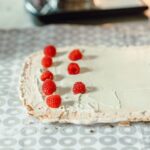Are you wondering what is the best frosting to use for cake decorating? Choosing the right frosting is crucial for achieving the desired look and taste of a beautifully decorated cake.
In this blog post, we will explore the different types of frosting options available and discuss the factors to consider when selecting the best frosting for cake decorating. Whether you are a beginner or an experienced baker, understanding the qualities and uses of various frostings will help you create stunning and delicious cakes.
When it comes to cake decorating, the type of frosting you use can make a significant difference in the overall appearance and flavor of your creation. From buttercream to fondant to cream cheese, each type of frosting offers unique properties that cater to specific design needs and taste preferences. In this article, we will dive into the world of cake decorating frostings and provide valuable insights into how to choose the best one for your next baking project.
In addition to discussing different types of frostings, we will also explore flavor pairings that can enhance the taste of your cakes as well as provide practical tips for successful cake decorating using various frosting techniques. By the end of this blog post, you will have a comprehensive understanding of how to select and use the best frosting for your next cake decorating endeavor.
So let’s get started on this sweet journey into the art of choosing the perfect frosting.
Types of Frosting
When it comes to cake decorating, choosing the right frosting is crucial to achieving the desired look and taste for your creation. There are several types of frostings to choose from, each with its own unique qualities and uses. Understanding the different options available will help you make an informed decision about what frosting is best for your cake decorating needs.
Buttercream frosting is perhaps one of the most popular choices for cake decorating due to its versatility and ease of use. It can be flavored and colored in countless ways and can be used for piping intricate designs or creating a smooth finish on a cake. Swiss meringue, Italian meringue, and American buttercream are all variations of this classic frosting, each with its own set of characteristics that cater to specific cake decorating techniques.
Another common option is cream cheese frosting, known for its creamy texture and tangy flavor. This type of frosting pairs well with carrot cakes, red velvet cakes, and other flavors that benefit from a slightly tangy contrast. Cream cheese frosting works best when used to create a soft, rustic look or when piped into simple designs.
For more elaborate cake decorations, fondant and royal icing are often the go-to choices. Fondant provides a smooth canvas for intricate designs and sculpted details while royal icing hardens to create beautifully detailed decorations such as flowers or lacework on cakes. These types of frostings are particularly well-suited for wedding cakes or other special occasion cakes where an extra level of precision is desired.
| Frosting Type | Best For |
|---|---|
| Buttercream | Versatility in design and flavor |
| Cream Cheese | Tangy flavor; softer decorations |
| Fondant/Royal Icing | Intricate designs and detailed work |
Factors to Consider
When it comes to choosing the best frosting for cake decorating, there are several factors that should be taken into consideration to ensure that the end result matches your vision. From the type of cake to the desired texture and overall design, these factors play a crucial role in determining which frosting is the best fit for your decorating needs.
Type of Cake
Different types of cakes require different types of frosting. For example, a light and airy sponge cake may pair well with a fluffy buttercream frosting, while a dense chocolate cake may benefit from a rich and decadent ganache. It’s important to consider the flavor profile and texture of the cake when selecting the best frosting to complement it.
Desired Texture
The texture of the frosting itself is another important factor to consider. Some decorators may prefer a smooth and creamy texture, while others may opt for a firmer and more stable consistency. Understanding how different frostings can be manipulated to achieve various textures is key in achieving your desired look for your decorated cake.
Overall Design of the Cake
Finally, the overall design and theme of the cake should also influence your choice of frosting. Whether you are aiming for a simple and elegant design or an intricate and elaborate decoration, certain frostings lend themselves better to specific designs. Considering how each type of frosting can be used for piping, sculpting, or creating intricate details will help in making an informed decision.
By carefully evaluating these factors, you can determine what is the best frosting to use for cake decorating based on your specific needs and preferences. Taking into account the type of cake, desired texture, and overall design will ultimately lead to a successful outcome in enhancing not only the appearance but also the taste of your beautifully decorated cake.
Buttercream Frosting
When it comes to cake decorating, buttercream frosting is often the go-to choice for many bakers and decorators. Its smooth texture and ability to hold intricate designs make it a versatile option for various cake styles and themes. In this section, we’ll delve into the details of buttercream frosting, including its different variations and why it is a popular choice for cake decorators.
Versatility and Ease of Use
One of the key reasons why buttercream frosting is widely used in cake decorating is its versatility. It can be easily colored, flavored, and piped into different designs, making it suitable for both simple and elaborate decorations.
Whether you’re looking to create smooth, minimalist designs or intricate floral patterns, buttercream frosting provides the flexibility needed to bring your creative vision to life. Additionally, its smooth texture allows for a seamless finish on cakes, making it an ideal choice for achieving a polished look.
Different Variations: Swiss Meringue, Italian Meringue, and American Buttercream
Buttercream frosting comes in several variations, each with its own unique qualities. Swiss meringue buttercream is made by whisking egg whites and sugar over a double boiler before adding softened butter to create a silky-smooth texture.
Italian meringue buttercream involves pouring hot sugar syrup into whipped egg whites to create a stable and glossy frosting. On the other hand, American buttercream is made with powdered sugar, butter, and flavorings like vanilla extract or cocoa powder for a straightforward approach to frosting.
Regardless of the variation chosen, each type of buttercream offers different levels of sweetness, stability, and richness that cater to different palates and preferences in cake decorating. Understanding the differences between these variations can help decorators choose the best type of buttercream frosting for their specific design needs.
In addition to its versatility and ease of use, another advantage of using buttercream frosting for cake decorating is its compatibility with various flavors. From classic vanilla or chocolate to more adventurous combinations like salted caramel or raspberry lemonade, there are endless possibilities when it comes to flavor pairings with buttercream frosting. By experimenting with different extracts, fruit purees, or spices, decorators can enhance the taste profile of their cakes while complementing the overall design aesthetic.
Ultimately providing an opportunity to elevate the sensory experience of enjoying decorated cakes through thoughtful flavor pairings.
Cream Cheese Frosting
One of the key factors to consider when using cream cheese frosting for cake decorating is the texture of the frosting itself. It is important to achieve the right consistency so that it can be easily spread or piped onto the cake without losing its shape. Additionally, cream cheese frosting tends to be softer than other types of frosting, so it may not be suitable for intricate designs or decorations that require a more stable base.
When choosing cream cheese frosting for cake decorating, it is essential to consider the temperature at which it will be served. Since cream cheese frosting contains dairy, it should be refrigerated before and after decorating the cake to ensure food safety. This also means that if the cake needs to sit out at room temperature for an extended period, another type of frosting may be a better option.
| Types of Cakes | Suitable Flavors |
|---|---|
| Carrot Cake | Cream Cheese Frosting pairs well with carrot cake due to its complementary flavors |
| Red Velvet Cake | The tanginess of Cream Cheese Frosting enhances the flavor profile of red velvet cake |
| Spice Cakes | Cream Cheese Frosting adds a delightful contrast to spice cakes |
Fondant and Royal Icing
When it comes to cake decorating, fondant and royal icing are two popular choices that offer unique properties and are best suited for more intricate and detailed designs. Both of these frosting options have their own distinct qualities that make them ideal for creating stunning cake decorations.
Fondant is a smooth, pliable icing that can be rolled out and draped over the cake to create a flawless finish. It is perfect for creating sharp edges, covering entire cakes, and sculpting intricate designs. With fondant, decorators can achieve a sleek and professional look for their cakes. This type of frosting is also great for adding decorative elements such as flowers, ribbons, and other embellishments due to its versatility and ability to hold its shape.
On the other hand, royal icing is a hard-drying frosting that becomes firm when it sets. This makes it an excellent choice for intricate piping work, delicate lace patterns, and fine details on cake decorations. Royal icing is often used to create intricate borders, filigree designs, and delicate lettering on cakes. It offers decorators the precision and control needed to achieve elaborate designs with clean lines.
Flavor Pairings
When it comes to cake decorating, choosing the right frosting is essential not only for the visual appeal but also for enhancing the overall taste of the cake. The right flavor pairing can take a cake from good to exceptional, leaving a lasting impression on anyone who takes a bite. Here are some suggestions and inspiration for flavor pairings with different types of frosting to elevate the taste of your cakes.
Buttercream frosting, known for its creamy and smooth texture, pairs well with a wide range of flavors. Classic vanilla buttercream complements almost any flavor of cake, while chocolate buttercream adds richness to chocolate or red velvet cakes. For a more unique twist, consider pairing citrus-flavored buttercream with lemon or orange cakes, or add a hint of espresso to complement mocha-flavored cakes.
Cream cheese frosting, with its tangy and slightly sweet taste, is best paired with moist and flavorful cakes. Carrot cake pairs effortlessly with cream cheese frosting, as do spice cakes or pumpkin-flavored cakes. The combination of tangy cream cheese and warm spices creates a comforting and indulgent treat that is perfect for any occasion.
Fondant and royal icing, often used for intricate designs and decorations, can also be flavored to enhance the overall taste of the cake. Consider adding fruit extracts such as raspberry or passionfruit to fondant for a burst of fruity flavor that complements vanilla or white chocolate cakes.
Similarly, royal icing can be flavored with extracts like almond or coconut to add depth to the decoration while tying in with the underlying cake flavor. No matter which type of frosting you choose for your cake decorating endeavors, experimenting with different flavor pairings can lead to delightful combinations that will leave your guests asking for more.
Tips for Successful Cake Decorating
When it comes to successful cake decorating, choosing the right frosting is only the first step. Once you have selected the best frosting for your cake, it’s important to know how to use it effectively to achieve the desired results. Piping techniques are essential for creating intricate designs and patterns on a cake using frosting.
Different piping tips can be used to achieve varying effects, such as stars, rosettes, and petals. It’s important to practice different piping techniques on a spare surface before applying them to the actual cake.
Color mixing is another important aspect of successful cake decorating with frosting. Depending on the design and theme of the cake, you may need to create custom colors for your frosting. Use gel food coloring for vibrant and consistent colors, and start with small amounts before adding more color as needed. Keep in mind that some frostings may darken over time, so allow time for the colors to develop before adding more.
Troubleshooting common issues can also make a big difference in achieving professional-looking cake decorations with frosting. If your frosting becomes too soft or runny, try chilling it in the refrigerator for a short period of time before resuming decoration. On the other hand, if your frosting becomes too stiff, add a small amount of milk or cream and mix well until you reach the desired consistency.
In summary, mastering piping techniques, color mixing, and troubleshooting common issues are all essential components of successful cake decorating using frosting. With practice and patience, anyone can create beautiful and professional-looking cakes with the right tools and knowledge of using frosting effectively.
Conclusion
In conclusion, choosing the best frosting for cake decorating is a crucial decision that can greatly impact the overall appearance and taste of a cake. With so many options available, it is important to consider factors such as the type of cake, desired texture, and overall design when selecting the ideal frosting.
Whether it’s the versatility of buttercream, the smoothness of cream cheese frosting, or the intricacy of fondant and royal icing, each type of frosting offers unique qualities that can enhance the visual appeal and flavor of a cake.
When considering what is the best frosting to use for cake decorating, it’s also important to take into account flavor pairings to complement the chosen frosting. From classic combinations to more adventurous pairings, experimenting with different flavors can elevate the taste experience for those enjoying the finished product.
Additionally, incorporating practical tips and tricks for successful cake decorating, such as mastering piping techniques and color mixing, can help ensure that every cake turns out beautifully decorated with the chosen frosting.
Ultimately, whether you’re a seasoned baker or just starting out in cake decorating, understanding the characteristics and uses of various frostings will empower you to make informed decisions when choosing the best one for your next project. By carefully considering all factors involved in selecting a frosting and incorporating creative ideas and techniques, you can achieve stunning results that will delight both eyes and taste buds alike.
With attention to detail and a thoughtful approach to choosing frostings for cake decorating, you can create memorable cakes that leave a lasting impression on all who indulge in them.
Frequently Asked Questions
Which Buttercream Is Best for Decorating a Cake?
The best buttercream for decorating a cake is American buttercream. It’s easy to make, stable for piping, and holds its shape well, making it ideal for creating intricate designs on cakes.
What Kind of Icing Is Best for Decorating Cakes?
When it comes to icing for decorating cakes, royal icing is often considered the best option. It hardens to a smooth finish, making it perfect for creating detailed decorations and intricate designs on cakes.
What Is the Best Icing to Practice Cake Decorating?
The best icing to practice cake decorating with is buttercream. Its creamy texture makes it easy to work with, and it’s forgiving enough for beginners to experiment with different piping techniques and designs without too much pressure.

Welcome to my blog about home and family. This blog is a place where I will share my thoughts, ideas, and experiences related to these important topics. I am a stay-at-home mom with two young children. I hope you enjoy reading it! and may find some helpful tips and ideas that will make your home and family life even better!





